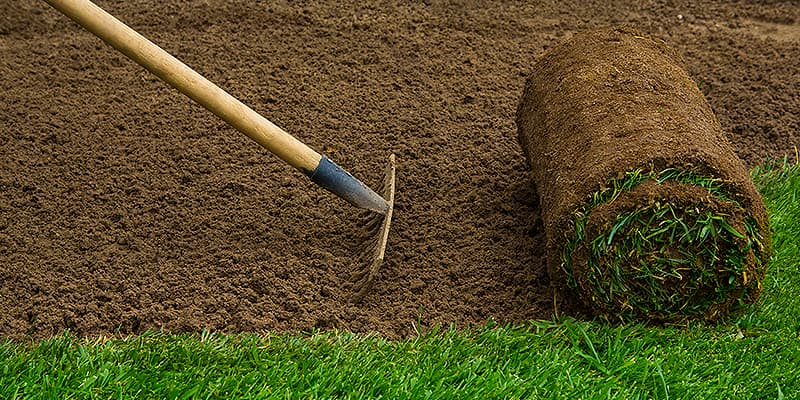
How to Lay Turf
We have put together a simple to follow guide on how to lay your brand new turf from Berkshire Turf. If you need further help with your turf laying, contact us.
If you're looking to order freshly-cut garden turf for your garden, we can help! You can order premium garden turf online in the button below.
Order Your Berkshire Garden Turf Now
Preparation
- Remove old vegetation, then rotate or dig over by hand. Cultivate to a minimum depth of 4 inches (10 cm).
- The ground must be accurately levelled before you put the turf down. No amount of rolling will level the ground after the turf is laid. Rolling only compresses the ground and over rolling can over compact the ground.
TIP - Don't worry too much about stones, but pay lots of attention to levels. The best way to achieve this is by raking, this breaks up the soil and you can move it about to fill in hollows. If the surface is loose it should be heeled all over and then lightly to achieve the final level. If you still want to improve the levels of your lawn, apply a thin of sharp sand or screened topsoil before you lay the turf.
Laying Turf
- Lay the turf green side up!
- The soil that you lay your turf on should be firm but not over compacted. The roots need oxygen and space for them to grow. An over compacted soil will be anaerobic (without oxygen) and root growth will be starved and physically impeded.
- A soil that is too loose will often uneven as the lawn settles down. For the best lawn you need a flat surface, which is easy to mow and ensures an even cut and soil conditions that promote a good healthy and strong root system.
- Your turf should be laid the same day that it is delivered. Turf is an organic product and left rolled up, for more than a short time, will die. The speed of this process is affected by moisture content and temperature. In cooler weather the turf will last a little longer rolled up.
- In dry weather water the soil before you put the turf down. This traps moisture underneath the turf and reduces the amount of water that you have to apply afterwards.
- Try laying the turf off planks (scaffold planks or plywood boards) particularly if the soil is wet or damp. Lay a line of turf, put the plank on the turf, then lay the next line of turf by walking up and down the plank. When a line is complete just roll the plank over and continue.
- Your turf rolls come ideally prepared for laying, however to enhance root growth you can apply a base fertiliser to the soil before laying. The fertiliser should be high In Phosphorous and Potash and low in Nitrogen.
- Your lawn area should now be transformed.
Top Tips
- If you leave the turf rolled up, you can extend it's life by splitting the pallets, by this we mean separating the rolls of turf from each other so that air can circulate and reduce the build-up of heat.
- You will need to cut some turf to fit and a useful tip is to use a sharp knife. A carpet knife is ideal.
Why choose Berkshire Turf?
Berkshire Turf has been providing high quality, freshly cut garden turf and topsoil for over 30 years.
- Turf supplier for over 30 years
- Fast delivery to your home
- Fresh product
- Turf Cut to order
- Friendly and efficient
- Domestic and trade customers
- Fully insured
Not sure what turf you need?
Give our friendly team of turf laying and installation experts today to discuss your requirements on 0118 963 9401.